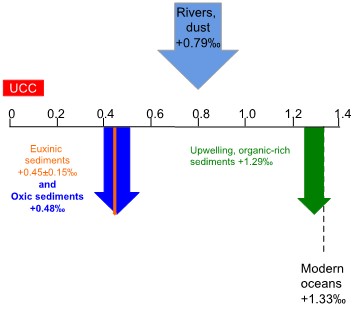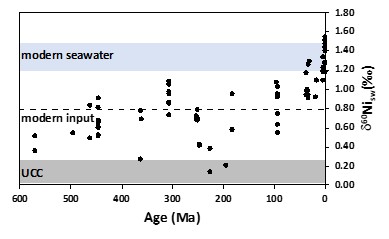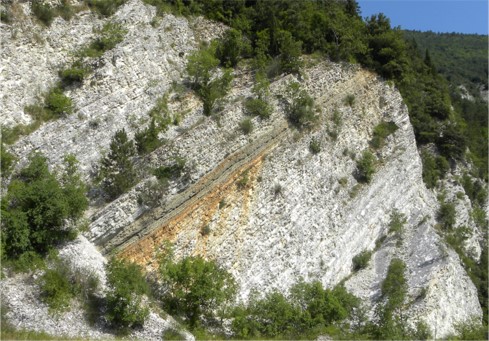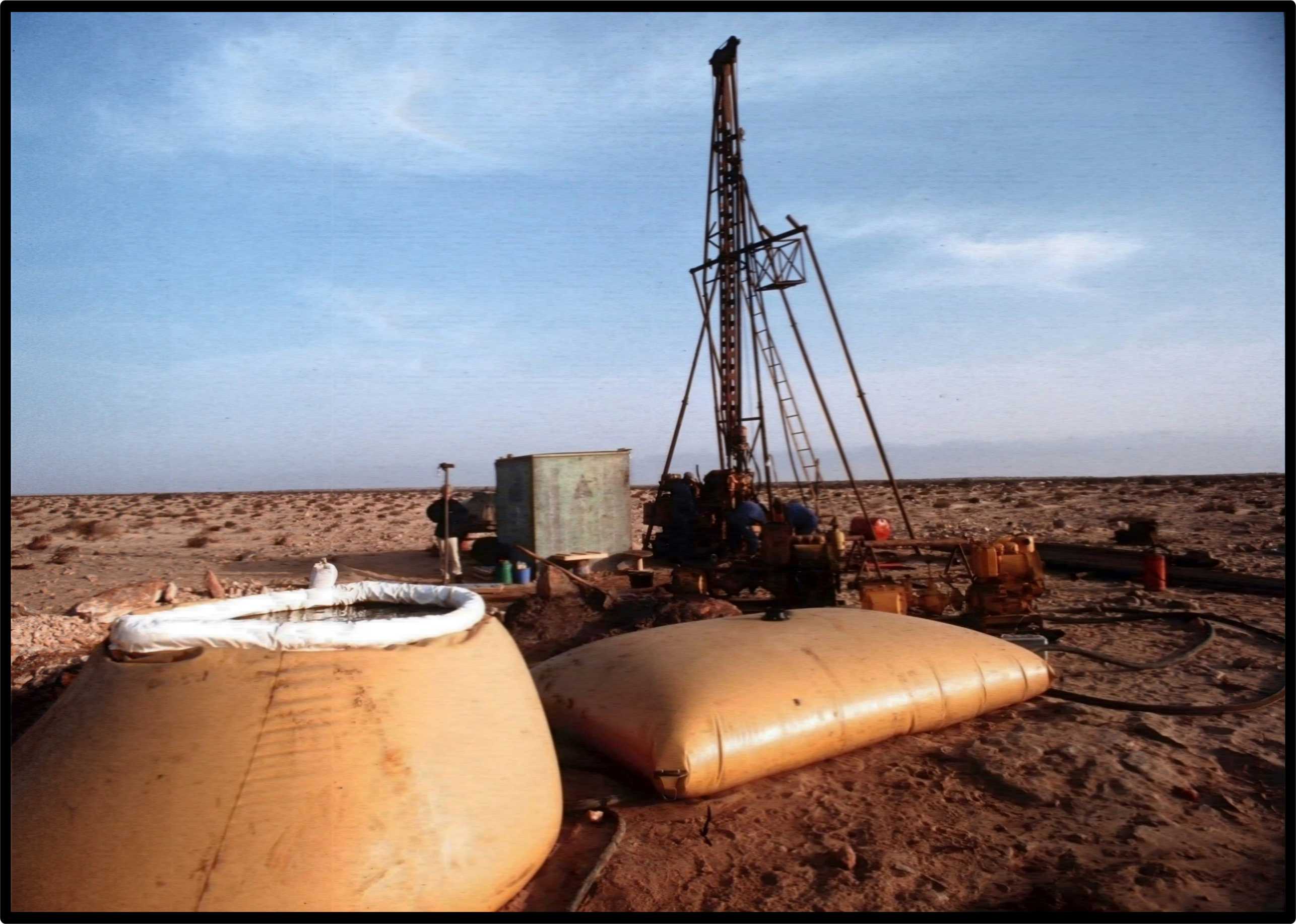Records of oceanic anoxia from trace metal isotopes
Trace metal isotopes are a promising tool for understanding Earth surface processes. Our group focuses on many trace metal isotopes to track the evolution of oceanic anoxia, such as Mo, U, Zn, Cd, and Ni isotopes. Here, the following introduction uses Ni as an example.
Nickel and its isotopes, expressed as δ60Ni are increasingly appreciated as an emerging tracer for understanding the biochemistry of the oceans, given an improved understanding of the trace metal budget in the modern ocean (Fig. 1).




The δ60Ni obtained from the authigenic fraction of modern ocean sediments at upwelling margins records the δ60Ni of the contemporary seawater. This approach suggests a potential tool for investigating the secular evolution of whole-ocean δ60Ni.
The Ni isotope evolution of seawater through the Phanerozoic, obtained from analysis of ancient upwelling sediments. Mass balance models are applied to quantitatively assess how secular changes in seawater δ60Ni are driven by changes in Ni budget.
Student projects
- Mingzhao Sun, (2023). Records of transition metal abundances and isotope compositions in the ancient ocean. Doctoral thesis.
